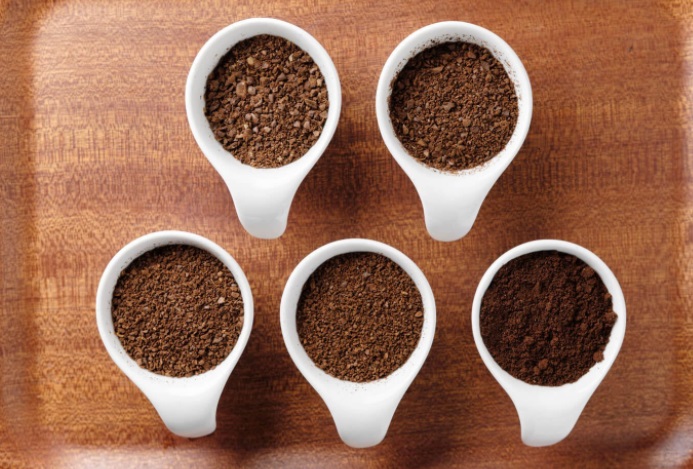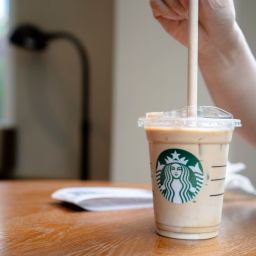
Are you a coffee lover but not keen on the jittery side effects of caffeine? Low caffeine coffee might just be your new best friend. This type of coffee offers the beloved taste and ritual of your morning brew without the intense caffeine hit. Ideal for those sensitive to caffeine or looking to reduce their intake, low caffeine coffee comes in various forms, ensuring there’s something for every palate and preference.
When it comes to finding the best low caffeine coffee, you’re spoiled for choice. Arabica beans, known for their superior flavor, contain roughly half the caffeine of their Robusta counterparts. Light roasts, contrary to popular belief, pack more caffeine by volume compared to dark roasts, so choosing a dark roast might be a better low-caffeine option. Brands like Laurina offer naturally low-caffeine Arabica varieties, providing a perfect blend of taste and mildness.
Key Takeaways
- Arabica over Robusta: Opting for Arabica beans is a smart move for those seeking less caffeine. With about half the caffeine content of Robusta beans, Arabica offers a smoother, more palatable experience without compromising on taste.
- Roast Matters: It’s a common misconception that dark roasts have more caffeine. In fact, light roasts contain more caffeine by volume, so if you’re aiming to cut down on caffeine, going dark is the way to go.
- Grind, Water, Brew: The finer the grind, the higher the caffeine extraction. Likewise, hotter water and longer brew times increase caffeine levels. So, for a milder cup, consider coarser grinds, cooler water, and quicker brew times.
- Brand Choices: For those looking to simplify their search, brands like Four Sigmatic and Maud’s Half Caff Coffee specialize in low caffeine options. They provide a convenient and reliable choice for your low-caffeine needs.
Types of Coffee Beans and Caffeine Content
When it comes to coffee, not all beans are created equal, especially concerning caffeine content. The two most common types of coffee beans are Arabica and Robusta, each with distinct characteristics and caffeine levels.
Arabica Beans: Arabica is the more popular choice among coffee lovers worldwide, known for its smooth, complex flavor profiles that can range from sweet and fruity to rich and tangy. But here’s a fun fact: Arabica beans contain about half the caffeine content of Robusta beans. This makes them an excellent choice for those who are sensitive to caffeine or prefer a less intense coffee experience. Plus, their lower caffeine content doesn’t compromise their flavor, which is why they’re often the go-to beans for specialty coffee shops.
Robusta Beans: On the flip side, Robusta beans pack a punch with their high caffeine content, which is about double that of Arabica beans. This isn’t just a trivial detail – the extra caffeine provides Robusta beans with a natural defense against pests and diseases, contributing to their hardier nature.
Flavor-wise, Robusta is often described as having a stronger, more bitter taste than Arabica, with a grainy or nutty aftertaste. It’s less common in high-end coffee circles but is popular in blends, especially those designed for espresso, as it provides a nice crema and a strong kick.
Why This Matters: Understanding the difference in caffeine content between these two types of beans can significantly impact your coffee experience. If you’re looking to cut down on caffeine without ditching coffee entirely, Arabica is your bean. But if you’re after a strong, bold coffee that wakes you up in the morning, Robusta might just be your new best friend.
Coffee Roast Profiles and Caffeine
When you’re selecting coffee, the roast profile isn’t just about taste—it also influences caffeine levels, but perhaps not in the way you might think. Whether you prefer a light, medium, or dark roast, understanding how each affects caffeine content can help tailor your coffee experience to your preferences.
Light Roast: Contrary to popular belief, light roast coffee has slightly more caffeine than its darker counterparts. The roasting process is shorter, meaning the beans are exposed to heat for less time, preserving more of the caffeine. Light roasts also tend to have a brighter acidity and more complex flavors, showcasing the bean’s natural characteristics.
Medium Roast: Medium roasts strike a balance, offering a more rounded flavor profile. They’re roasted longer than light roasts but not enough to bring out the heavier, smoky flavors characteristic of dark roasts. The caffeine content in medium roasts is slightly less than in light roasts but not by a significant margin.
Dark Roast: Dark roast beans are roasted for the longest period, leading to a reduction in caffeine content due to the extended exposure to heat. However, this reduction is minimal, and the perception that dark roasts are significantly lower in caffeine is more myth than reality. Dark roasts feature a fuller body and richer flavor, often with a pronounced bitterness.
Volume vs. Weight: It’s worth noting that while the caffeine content by bean might decrease slightly with more extended roasting, the way you measure your coffee can affect the perceived caffeine content. Lighter beans are denser, so if you’re measuring your coffee by scoops (volume), you’re using more beans when you choose a light roast versus a dark roast. However, if you measure by weight, the difference in caffeine content between light and dark roasts is negligible.
Brewing Methods and Caffeine Extraction
Different brewing methods can extract caffeine at varying rates, affecting how much ends up in your cup. Here’s how you can tweak some popular methods to reduce caffeine extraction:
French Press: The French Press allows coffee grounds to steep directly in hot water, which can lead to higher caffeine extraction. For less caffeine, consider using a coarser grind, shorter brew time, or slightly cooler water. Each of these adjustments can reduce caffeine without sacrificing too much flavor.
Pour-over: With pour-over, you have excellent control over the brewing process. To extract less caffeine, try using a coarser grind, reducing the water temperature, or speeding up your pour to shorten the contact time between the water and the coffee grounds.
Other Methods: Espresso machines extract caffeine quickly due to the high pressure, so switching to a method like cold brew can reduce caffeine intake. Cold brew coffee is steeped for a long time but at a cold temperature, which extracts less caffeine relative to hot brewing methods.
Recommended Low Caffeine Coffee Brands
Looking for low caffeine options? Here are a couple of brands worth considering:
Four Sigmatic Mushroom Ground Coffee:
This unique coffee blends organic coffee with Chaga mushrooms, known for their antioxidant properties and potential to enhance focus without a heavy caffeine hit. It’s a great pick if you’re after a coffee that’s different from the usual, with added health benefits and a mild caffeine level.
Maud’s Half Caff Coffee:
If you prefer a traditional coffee flavor but want less caffeine, Maud’s Half Caff is an excellent choice. It’s designed to deliver the rich taste of coffee with only half the caffeine, making it ideal for those looking to cut back without going fully decaf.
FAQs
Does light roast coffee have more caffeine than dark roast?
Yes, light roast coffee retains slightly more caffeine than dark roast due to the shorter roasting process. However, the difference is minimal when measured by weight, becoming noticeable only if you measure your coffee by volume.
Can I reduce caffeine content by changing my brewing method?
Absolutely! Opting for brewing methods that allow for shorter contact times between water and coffee, like the pour-over, or using cooler water can reduce caffeine extraction.
Are there specific coffee brands known for lower caffeine content?
Yes, brands like Four Sigmatic and Maud’s Half Caff Coffee specialize in lower caffeine options, offering a great taste with reduced caffeine levels.
Final Thoughts
Arabica beans inherently have less caffeine than Robusta, offering a smoother, more palatable coffee experience. Light roasts have slightly more caffeine than dark roasts, so if you’re aiming for less caffeine, opt for a medium or dark roast.
Techniques like the pour-over or using cooler water can reduce caffeine extraction without losing the essence of coffee. Companies like Four Sigmatic and Maud’s Half Caff offer innovative blends that cater to the low-caffeine coffee market.









